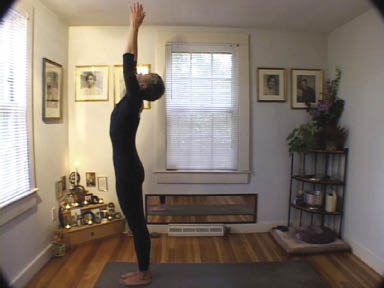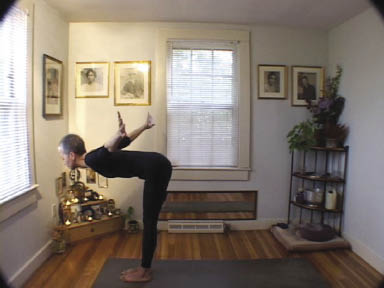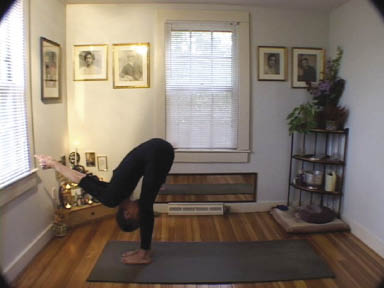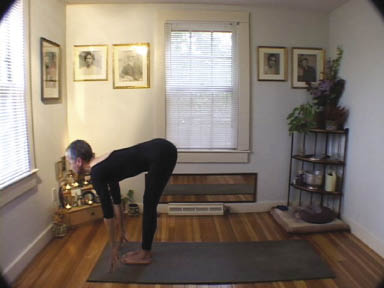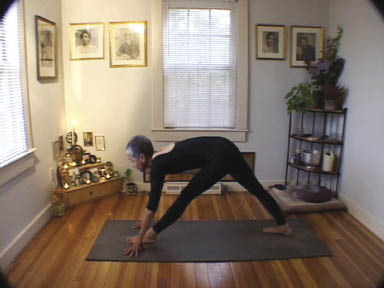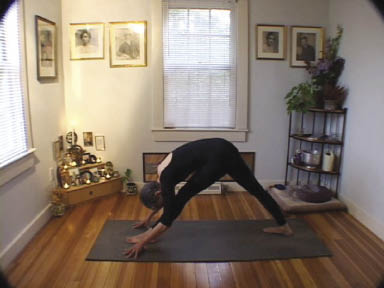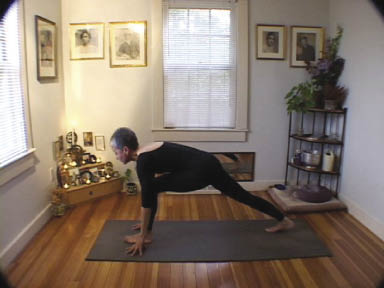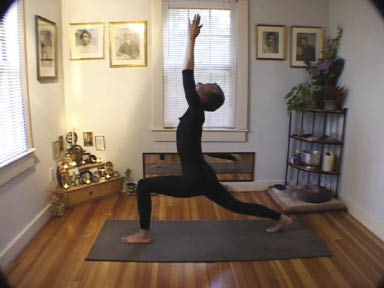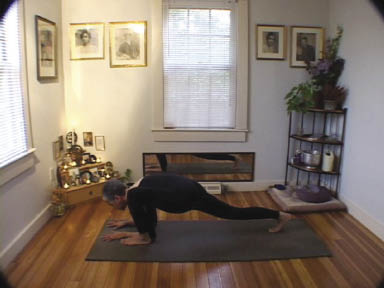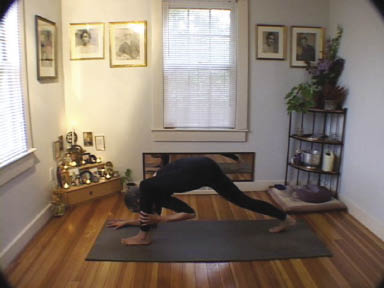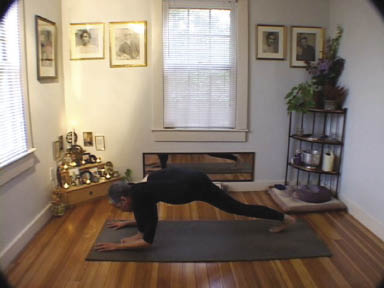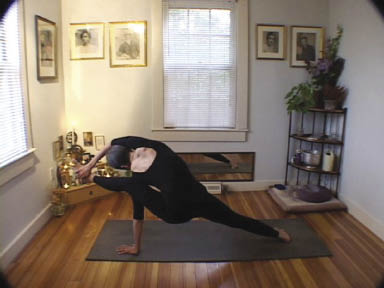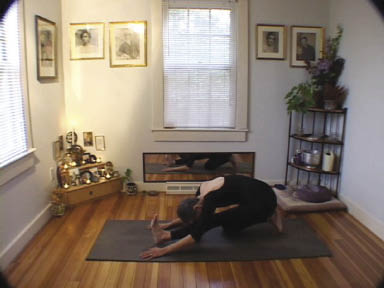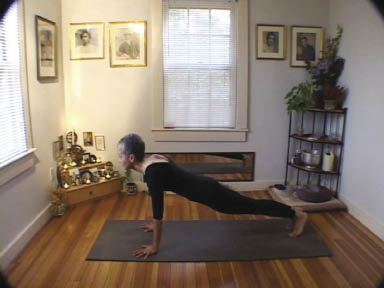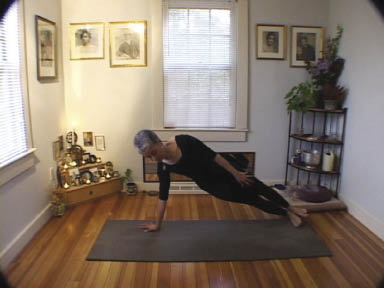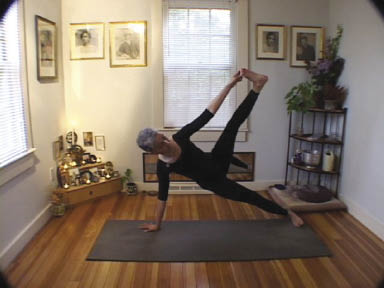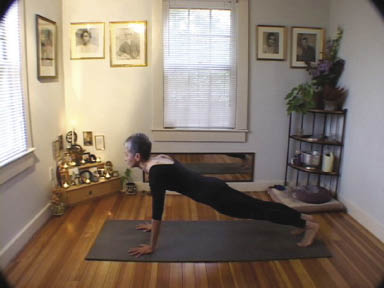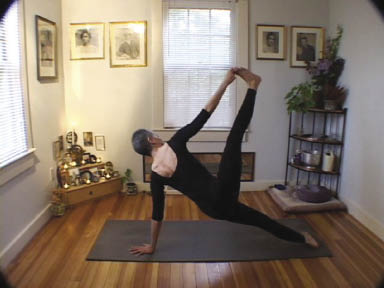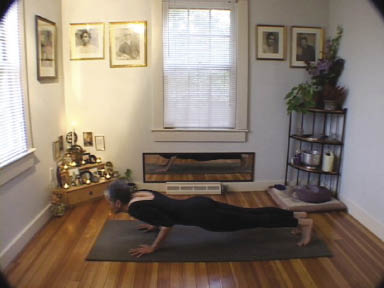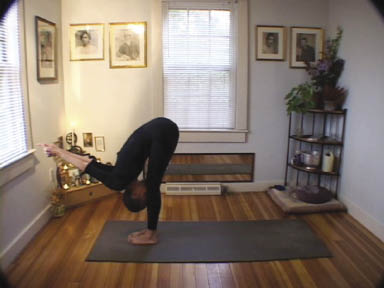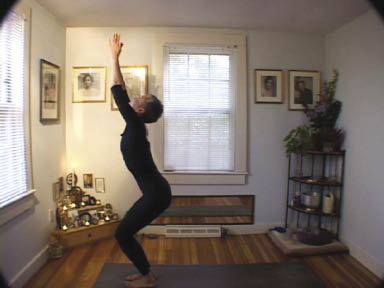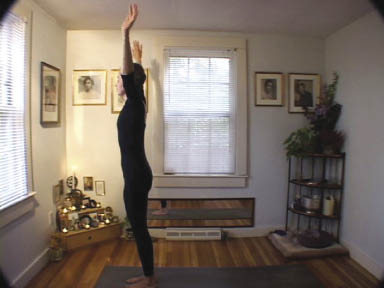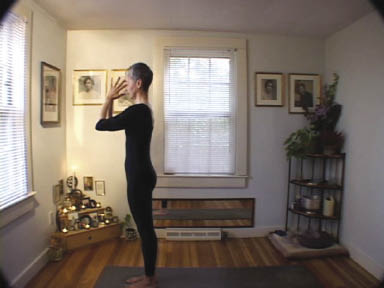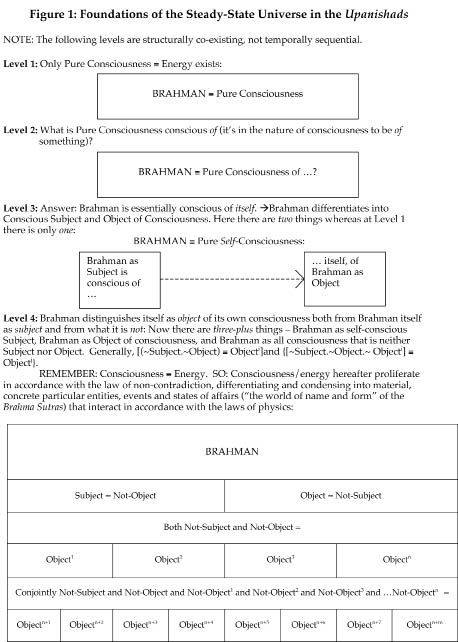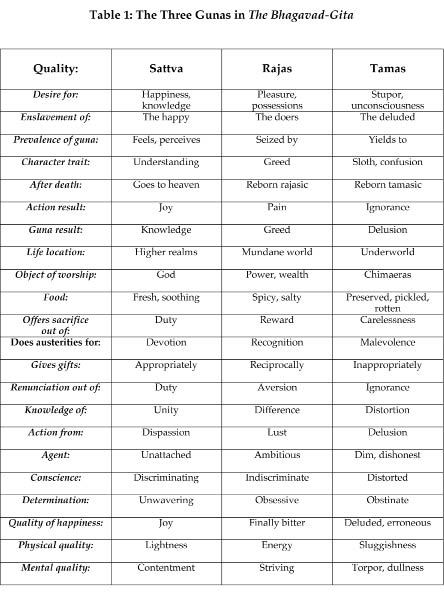SADHANA AS A TAPAS
Indian and Classical Greek philosophical traditions both recommend that we structure our lives around the performance of certain kinds of actions as daily and regular habits. Under some circumstances and for some individuals, this means merely doing what comes naturally. For others, it requires varying degrees of self-control. For yet others, adhering to these practices is impossible or unimportant, beyond the scope of their interests or abilities. I want to take issue with one familiar answer to the question of why this is and to suggest a different one.
I. SADHANA
The Yoga Sutras (II.29) enjoin us to cultivate the values and habits appropriate to the higher practices of yoga through consistent sadhana or spiritual practice – the daily performance of very specific kinds of action:
The yamas are restraints on action that govern our relationships with others. They include nonviolence, avoidance of falsehood, abstention from theft, celibacy, and non-possessiveness or detachment.
The niyamas are positive observances that govern our relation to our higher self. They include mental and physical purity, contentment, self-discipline, self-study, and devotion to the sacred.
The asanas are physical postures that cultivate physical and physiological strength, flexibility, and balance.
Pranayama consists of exercises that cultivate control of the breath, the strength and endurance of the central nervous system, and so mental and psychological equilibrium.
Pratyahara, dharana, dhyana, and samadhi are meditation practices that cultivate perceptual and intellectual discrimination, sustained and focused attention, and in-depth self-scrutiny.
Adhering to all of these practices can seem like a lot of work. For this reason they are considered to be forms of tapas, i.e., disciplines or austerities we may choose to impose on our behavior that, at the beginning, generate heat and energy because our ego-selves resist them. The stronger and more expansive the ego, the harder the work of bringing it into line.
However, we do not escape this work by turning to the Western philosophical tradition. Socrates in the Euthyphro enjoins us to “give [our] first and greatest care to the improvement of [our] souls” (30b1-2); “to set our thoughts on goodness” (31b5-6); to “not allow to grow in [our]selves the habit of dishonesty” (35c6-7); and to “make [ourselves] as good and wise as possible” (36c56). He warns us that “[i]t is much more honorable and much easier, not to suppress others, but to make [our]selves as good as [we] can” (39d6-8). And in the Crito he advises that “we ought not to repay injustice with injustice or to do harm to any man, no matter what we may have suffered from him” (49c11 – d1). Socrates’ counsel is more general than the detailed instructions for sadhana we find in the Yoga Sutras. But the similarities in the kind and content of actions he recommends are clear.
It is tempting to interpret Socrates’ recommendations as telling us simply to be good and wise or to act honorably and truthfully – as though we could easily follow these recommendations through simple acts of will, as though we could immediately become the model of human excellence to which we aspire, merely by wanting to. This impression is reinforced by Socrates’ own behavior which embodied this model of excellence with ease and grace.
Aristotle, Plato’s student, corrects this impression for the rest of us. He says we are to cultivate virtuous traits of character – courage, temperance, generosity, kindness, patience, truthfulness, friendliness, modesty, and so on – by diligently practicing them until they become second nature (1103a15-19; 33 – 1103b2). Through systematic repetition of the relevant actions, Aristotle tells us, these actions become habitual character traits. We then reflexively and naturally express them in action, as circumstances call them forth. He says:
It is the way that we behave in our dealings with other people that makes us just or unjust, and the way that we behave in the face of danger, accustoming ourselves to be timid or confident, that makes us brave or cowardly. Similarly with situations involving desires and anger: some people become temperate and patient from one kind of conduct in such situations, others licentious and irritable from another. In a word, then, like activities produce like dispositions. (1103b14-22)
I believe that Aristotle’s inspiration for this insight came from the Brihadaranyaka Upanishad, in which Yagnavalkya argues:
As a man acts, so does he become. A man of good deeds becomes good, a man of evil deeds becomes evil. A man becomes pure through pure deeds, impure through impure deeds. (paragraph 232)
Both texts argue that we sculpt our characters and inner selves using the tool of our physical behavior. Both challenge the Western psychoanalytic assumption that right outward action stems from successful inner self-scrutiny. Both claim that cultivation of character and self progresses in the opposite direction, from outer to inner. Once we have trained ourselves to be fluent and effortless in right action through practice and repetition, we already will have achieved the moral and spiritual character that such action naturally and effortlessly expresses.
In the meantime, we may choose to exert ourselves in less ambitious acts of will. If we can now, on this occasion, bring ourselves to behave outwardly in the way a morally and spiritually developed person would behave, we begin to carve the pathways of habit and disposition in which we want our inclinations to travel. We in effect gradually mold ourselves to be the kind of person we aspire to be. In time, Aristotle assures us, the inner qualities of mind and temperament will follow.
So we find in both Indian and Greek philosophical traditions the very strong recommendation to undertake certain physical and mental activities on a regular, indeed even a daily basis, and to practice them repeatedly and systematically until they become second nature; in short, we should train ourselves in human excellence. Both traditions regard the project of self-cultivation as centrally definitive of a worthwhile human life.
II. Tapas
I said earlier that all this seems like a lot of work. But appearances, as we know, can deceive. It may be less work than it seems, when one is ready to undertake it, or more work for some people than for others, or more work at some points in one’s life than in others. For Socrates, it wasn’t work at all, but rather his happiness. These practices may require very great self-governance for one individual or under one set of circumstances. They may be not only effortless but also intensely pleasurable under another.
One explanation is inherent in Aristotle’s account of habituation. These practices are perhaps the hardest work of all to the extent that one has had no prior experience with them, and they become easier and more effortless with practice. Just as learning to play the piano is most excruciating at the very beginning when one’s fingers are stiff and unwilling and one’s repertoire is confined to Hannon and Czerny fingering exercises, holding one’s temper or postponing the satisfaction of desire may be virtually unachievable if one has had no prior practice in doing so. The lesson here is that the work of self-cultivation is hardest at the very beginning of the project and that one must want overridingly to achieve this end – more than one wants, at that moment, to express one’s anger or satisfy one’s immediate desire – in order to make any headway at all.
But this explanation leaves many questions unanswered. It does not explain why the hard work of self-cultivation, hard as it is at the beginning for all of us, is so much more challenging for some of us than for others. Nor does it explain why, however hard that work is, some of us but not others have the interest or ability to want it badly enough in order to prevail. Why is sadhana of interest to some but not others? Why is it so much harder for some than for others? And among those for whom it is difficult, why do some but not others succeed in continuing to practice it? Just how much of a tapas is sadhana supposed to be?
A different answer to these questions is supplied by familiar versions of certain Hindu doctrines. These claim that lack of interest and difficulties or failures in the project of self-cultivation – like any other personal difficulties or failures – are the result of “bad karma,” i.e., that any such present difficulties are the deserved result of one’s own prior derelictions, either in this life or an earlier one. This answer thus motivates us to practice the virtues out of fear that any vicious actions we perform will come back to haunt us. It instructs us to accept any difficulties or failures we are presently experiencing as the just retributive consequences of vicious actions we have performed in the past or in a past life.
And it thus implies that those for whom sadhana is easier are in some mysterious sense morally superior to those for whom it is hard.
I take moral issue with the implied use of fear to motivate virtue, with encouraging acceptance of rather than constructive resistance to present personal misfortune, with the reasoning that any such misfortune – particularly to children, animals, and the innocent – is their own fault, and, therefore, with the illusion of moral hierarchy in a wisdom tradition that implicitly rejects it. But I focus here on the metaethics behind the “bad karma” argument.
This argument presupposes two metaethical doctrines of Hinduism: the doctrine of karma and the doctrine of reincarnation.6
In its familiar form, the doctrine of karma states that:
- (1) all actions are causally determined by earlier ones;
- (2) all actions have morally significant, causally determined consequences, extending into the indefinite future; and
- (3) morally good actions have morally good consequences and morally bad actions have morally bad consequences.
The familiar doctrine of reincarnation states that:
- (1) an individual is repeatedly reborn in one life after another and one body after another;
- (2) the life circumstances in which one is reborn on a particular occasion are determined by the moral quality of one’s previous life; and
- (3) morally good actions in a previous life determine better life circumstances the next time around and morally bad actions in a previous life determine worse life circumstances the next time around.
The familiar doctrines of karma and reincarnation are thus mutually interdependent: karma supplies the causal and moral continuities of acts and consequences throughout time, reincarnation supplies the metaphysical and personal continuities of individual identities who are affected by them throughout time.
Thus both assume the temporal continuity, through successive lifetime physical embodiments, of a persisting individual ego-self. Both assume the persisting ego-self as the causal origin of a succession of behaviors and consequences of behaviors that further mold and influence it. And both assume that those behaviors and consequences can be morally evaluated, consistently and objectively over time, independent of context, community, or culture.
As stated, these familiar doctrines are vulnerable to many objections I cannot explore here. In what follows I suggest a different interpretation of these doctrines that is consistent with the metaphysics of the Upanishads but implies a different explanation for why sadhana requires more self-control for some individuals or under some circumstances than others.
III. The Spiritual Function of Sadhana
These practices fit into the context of a more general moral view, in both Indian and Greek traditions. In both, we undertake these practices, not as ends in themselves, but rather for the express purpose of cultivating the self – of refining our moral, intellectual, and spiritual capacities to their fullest expression. This, in turn, serves a further purpose: to achieve knowledge of ultimate reality. The Katha Upanishad states:
[W]hen a man has discrimination and his mind is controlled, his senses, like the well-broken horses of a charioteer, lightly obey the rein (paragraph 55). The senses of the wise man obey his mind, his mind obeys his intellect, his intellect obeys his ego, and his ego obeys the Self (par. 61). When all the senses are stilled, when the mind is at rest, when the intellect wavers not – then, say the wise, is reached the highest state. This calm of the senses and the mind has been defined as yoga. He who attains it is free from delusion. (par. 106-107)
Here we find the probable inspiration for Plato’s metaphor in the Phaedrus of the immortal soul as a charioteer who governs the passions in the form of two horses, one obedient and one not. The thought is that in order to grasp knowledge of ultimate reality, we must physically, physiologically, psychologically, and spiritually prepare ourselves to receive it. Our body and central nervous system must be conditioned and balanced, our senses alert, our intellect sharp and clear, and our vision impartial and unclouded by undisciplined desires, impulses, or personal bias or preoccupations. This conception of sadhana is familiar in Yoga and Vedanta. But it is implicit in Aristotle’s remarks in the Nicomachean Ethics on the contemplative life as requiring self-sufficiency, leisure, freedom from fatigue, and that we “ought, so far as possible, to make ourselves immortal, … to do all that we can to live in conformity with the highest that is in us; for … this is the true self of the individual (1177b 20 – 1178a4).
Similarly, in both traditions, to achieve this knowledge is intensely pleasurable. In Yoga and Vedanta, the pleasure derives from the lived experience of union with ultimate reality. This experience is the final outcome of the practices already described which cultivate the discernment of underlying unity behind the multiplicity of appearances. Because direct, experiential insight into this underlying unity at the same time transcends the apparent boundaries between the knowing subject and the object known, the experience of union is simultaneously an experience of unconditional love, unrestricted freedom, and undifferentiated bliss. Thus, the final outcome of sadhana is a release from the rigors of tapas because it is a release from the limiting constraints of ego-individuation:
Having fully ascertained and realized the truth of Vedanta, having established themselves in purity of conduct by following the yoga of renunciation, these great ones attain to immortality in this very life; and when their bodies fall away from them at death, they attain to liberation. (Mundaka Upanishad par. 56)
In hindsight, we discover that tapas – the experienced friction of working against the resistance of our delinquent impulses – was also the felt resistance of the physical and spiritual bars that imprisoned us within our limited individual identities. Having achieved knowledge of ultimate reality, we thereby achieve a state in which these temporal and material constraints no longer exist.
Aristotle’s account of the happiness that comes with the life of contemplation is less explicit but, nevertheless, consistent with this account. He defines happiness as “an activity of the soul in accordance with or implying a rational principle” (1098a8-9), i.e., virtue, and declares that “virtuous actions must be pleasurable in themselves” (1099a20-21). Contemplative activity, however, is the highest virtue of “the best part of us.”
Whether this is the intellect or something else that we regard as naturally ruling and guiding us, and possessing insight into things noble and divine …it is the activity of this part, in accordance with the virtue proper to it, that will be perfect happiness (1177a12-18).…any man who lives it will do so not as a human being but in virtue of something divine within him, and in proportion as this divine element is superior to composite human nature. (1177b26-28)
Here Aristotle describes contemplation as insight into “things noble and divine” lived and experienced “in virtue of something divine within [us].” What we come to know through contemplation has a divine dimension, and we come to know it in virtue of the divine dimension within ourselves. Both Indian and Greek traditions associate the divine with the unconditioned – that is, with omnipotence, omniscience, and unconditional freedom. Hence, I would propose that Aristotelian contemplation, like yogic meditation, is a process that advances us from the conditioned world of individuated appearances to experiential insight into the unconditioned, unified ultimate reality that lies behind it. Next, I try to suggest what it is about this ultimate reality that enables us to arrive at it through the yogic practices of sadhana.
IV. The Metaphysics of Sadhana
Obviously, I set myself here an impossible task. By definition, what is unconditioned and unlimited is beyond the capacity of individuating words and concepts to capture. That is why the Upanishads refer to ultimate reality using not a descriptive term but rather a proper name, Brahman. Like the name Susan, the term Brahman designates something without purporting to describe it. Unlike a person named Susan, however, the referent of the term Brahman cannot be described, and to try is to immediately fail. Nevertheless, the rishis who authored the Upanishads could not resist the temptation to try. They disagreed violently among themselves as to how best to describe Brahman. I like to envision the rishis, each firmly ensconced within the solitude of his or her forest enclave, furiously e-mailing one another back and forth about this topic.
In the Prasna Upanishad, Brahman is associated with the sun, light, prana (or breath), and energy (pars. 6, 8-9, 13, 40-41, and especially 60). In the Mundaka, Brahman is described as willing the universe into existence and engendering its material cause. This in turn engenders its primal energy, which in turn engenders mind, and so the subtle elements. These in turn engender multiplicity, and, thereby, the causal determination of the universe (par. 9). The Mundaka also describes Brahman as formless and self-luminous (pars. 19, 29, 3839), reinforcing the characterization of the Prasna. The Taittiriya Upanishad narrates the way Brahman:
[d]esiring that he should become many, that he should make of himself many forms, … meditated. Meditating, he created all things. Creating all things, he entered into everything (pars. 32 – 33).
Later in the Taittiriya, Brahman is described as the “source of all thought and life and action” (par. 67). Similarly, the Aitareya Upanishad opens by declaring that:
Before creation, all that existed was the Self, the Self alone. Nothing else was. Then the Self thought: “Let me send forth the worlds.” (par. 1)
Later, the Aitareya characterizes Brahman as pure consciousness (pars. 13, 15). The Chandogya Upanishad describes the realized form of the Self as light and its thoughts as true (par. 5). It later declares that:
In the beginning there was Existence alone – One only, without a second. He, the One, thought to himself: Let me be many, let me grow forth. Thus out of himself he projected the universe; and having projected out of himself the universe, he entered into every being. (par. 42)
These descriptions of Brahman have three features in common. First, they provide a first-cause explanation of the creation of the physical universe of name and form. Second, they characterize this first cause as intentional or object-directed. Third, they further characterize this first cause as self-aware, i.e., as conscious of the nature and consequences of intentional conscious acts.
From these three features we can extrapolate an account of the relation between the ultimate reality we may seek to know and the concrete practices within our familiar world of multiplicity by which we can come to know it. We need only make one assumption that is implicit but not actually stated in the Upanishads. That one extra assumption is that consciousness is identical to energy.7 If consciousness is energy and energy can condense into matter, then an intentional consciousness can causally engender a physical state of affairs. And if energy is conscious, then every materially condensed physical object has some degree of consciousness, however slight. This provides one way of understanding the frequently repeated claim in the Upanishads that Brahman, or the true Self, subsists not only in every living thing but also deep within every being of any kind.
Under this assumption, ultimate reality – or Brahman – is pure consciousness, and ultimate reality generates the world of name and form in exactly the same way consciousness always engenders multiplicity. Consciousness – or Brahman – is inherently intentional; it is always consciousness of something [please refer to Figure 303].
In the limiting case in which there is only one thing, namely consciousness, consciousness is nevertheless conscious of itself, i.e., it is self-conscious. But then there are two things that are Brahman, namely Brahman as conscious subject and Brahman as object of that consciousness. However, this bipartite relation, too, implies consciousness that is neither subject nor object but conscious of both. Brahman is now three things: subject, object, and that consciousness which is neither – with the attendant distinctions of name that identify the distinctions in form which that consciousness has created. Each iteration of the act of self-conscious discrimination creates further multiplicity and diversity in the objects of consciousness at the same time that it further detaches the ultimate Self from the multiplicity of objects its self-awareness has created.
And because – and here is where our extra assumption becomes useful – consciousness is identical to energy, these acts of self-awareness generate intentional objects of consciousness that have physical reality as well. These individuated forms constitute our familiar, causally-determined world of multiplicity and include human beings. So this world, including humanity, is a product of Brahman, is co-extensive with Brahman, is saturated with Brahman, and is also an illusion that conceals the steady, unitary state of consciousness that Brahman is in fact.
Sadhana comprises spiritual practices within the familiar world of multiplicity that enable us to trace this path back in the opposite direction, from “the world of name and form” to “the One without a second” that underlies it. In the Upanishads, individual human consciousness is an extension of the original, unitary consciousness that engenders it. Like that original consciousness, individual human consciousness in turn creates further objects of awareness8 – then enters into them, then gets lost in them. Identifying with and pursuing the objects of individual consciousness we have created, we lose our connection to the true Self whose objects they are.
In different ways, all of the eight limbs of yoga train us in two habits. First, sadhana trains us to observe and control our mental and physical reactions to stimuli. Second, sadhana cultivates the ability to detach our awareness from those reactions: from our perceptions, interpretations, and beliefs; from the emotions and desires we feel in response to them; from the actions our emotions and desires move us to perform; and, finally, from the fruits of those actions outside us. Thus, sadhana trains us in the habit of self-awareness.
Of course, we continue to experience the full force of these ego-states, as long as we survive as ego-selves at all. Simultaneously, through sadhana, we learn to regard the ego’s antics reflectively – with detachment, amusement, and compassion. From this reflective standpoint, the distinctions of name and form that give our ego-states such personal urgency are not all that important. We learn not to take our ego-selves too seriously. Sadhana teaches us to enjoy and applaud the dance without slipping a disk on the dance floor.
As we learn to view our ego-states from the standpoint of self-awareness, we come to identify with that Self in us that views the ego’s antics as entertainment. From that standpoint, we see that our ego-states are not essential parts of our Self at all. They are creations of self-consciousness we can observe, enjoy, and, finally, release. To release our ego-states from our consciousness is to release our consciousness from their imprisonment and so to rejoin the original, unitary consciousness that engendered them. In this sense, sadhana really is our direct pipeline to God.
V. “Bad Karma” and the Gunas
The Svetasvatara Upanishad describes how [t]he seers, absorbed in contemplation, saw within themselves the ultimate reality, the self-luminous being, the one God, who dwells as the self-conscious power in all creatures. He is One without a second. Deep within all beings he dwells, hidden from sight by the coverings of the gunas – sattva, rajas, and tamas. (par. 4)
The gunas are the three kinds of qualities or dispositions that differentiate ultimate reality into discriminable forms – as we just did a moment ago in distinguishing between Brahman as subject, Brahman as object, and Brahman as neither subject nor object. The gunas thus shape all physical and psychological entities and forces in the universe. So we release our ego-states from consciousness by examining, controlling, and releasing their qualities and dispositions [please refer to Table 1].
In the Bhagavad Gita, the analysis of the three gunas has a distinctly moral and hierarchical inflection. However, as natural cosmic forces, they are in themselves morally neutral. Sattva is the tendency toward weightlessness, dispersion, and clarity. In human beings it is associated with the character traits of serenity, purity, and joyfulness. When we are navigating effortlessly through our lives with ease, grace, and sensitivity, we are sattvic. Rajas is the tendency toward forward propulsion, explosive energy or force, and drive. In human beings it is associated with ambition, desire, and competitiveness. When we feel driven to speed up on the highway so as to outstrip the car that is trying to pass us, we are being rajasic. Tamas is the tendency toward inertia, resistance, and dullness. In human beings it is associated with ignorance, delusion, and stupefaction. We are tamasic after many hours of watching TV and even more so if we compound our couch potatohood with Big Macs and beer.
It may be difficult for us to think about these three tendencies in and of themselves without making moral judgments about them. But, they do not necessarily indicate a person’s moral character. Try, for example, to identify the preponderant guna in Aristotle’s portrait of the magnanimous man:
The magnanimous man is thought to have slow movements, a deep voice, and unhurried speech. For since he takes few things seriously, he is not excitable; and since he counts nothing great, he is not high-strung. (1125a13-16)
Aristotle’s magnanimous man sounds rather tamasic to me.
In human beings, the gunas shape our physical, biochemical, psychological, and spiritual constitution. As psychological and spiritual dispositions, the gunas determine the given traits of character we then may attempt to train and mold through sadhana. The particular mix of gunas is different for each of us and may be different at different points in our lives. All three of them are present in all of us to varying degrees.
For all of us, the key to progress in cultivation of our higher self – to upward spiritual mobility, as it were – is rajas. No matter how much tamasic inertia we each must resist, our apportionment of rajas is what drives us to formulate goals and ambitions and ideals for ourselves and what energizes us to achieve them. Rajas can find expression in passion, persistence, and commitment, as well as in the less admirable traits described in the Bhagavad Gita. Thus, rajas is the force that propels us along the path, from where we began to where we want to go. Where we want to go is determined by our individual priorities and our social conditioning. If we want to go to Brahman, rajas charges up our sadhana to gradually peel away the gunas or mental tendencies9 of the ego-self, layer by layer, until we reach “the ultimate reality, the self-luminous being, the one God, who dwells as the self-conscious power … hidden from sight by the coverings of the gunas” within all of us.
Now back to why sadhana is harder for some individuals at some times than for others at other times and why “bad karma” does not provide an adequate explanation of this. It follows from this account of the gunas that any project of self-improvement – which relies essentially on one’s own initiative rather than external incentives – will be more difficult on the face of it for those of us who have a large proportion of tamas in our personal constitution. It will be even harder if this inertial resistance is compounded by prior self-destructive or self-indulgent habits – whether learned or chosen – that must be overcome. Furthermore, some individuals may lack sufficient rajas ever to blast through these resistant habits of mind and body. They may be unable to make themselves want cultivation of their higher self or union with ultimate reality enough to endure the tapas of self-discipline. They may, quite simply, have other priorities. Others who lack these impediments will find the journey easier, and perhaps even pleasurable, because there is a greater proportion of sattva in their personal constitutions.
Moreover, neither science nor logic gives reason to dispute the thesis that there are individuated, non-physical continuities of energy that persist throughout several individual lifetimes. The gunas are psycho-physical forces that determine the manner, kind, and quality of all entities that condense out of original unitary consciousness. So they determine not only a person’s psychological dispositions of character but also the person’s capacity and inclination to alter or improve that character. What we do or do not do with our lives now may well entrench some of those dispositions so deeply that they survive the dissolution of the body. They may then gravitate to and condense in newborn physical forms in which they find further expression. Other life habits may erase some of those character traits and replace them with others that are, literally, self-canceling: the disposition to openness, generosity, humility, surrender, or self-sacrifice, for example – dispositions that soften and dissolve the boundaries of the ego-self and make union with ultimate reality much easier.
However, the transpersonal continuity of individual character traits through several lifetimes – call this the “thin” account of reincarnation – does not imply the transpersonal continuity of an individual ego-self – call this the “thick” account. As we have seen, character traits are dispositions to react to given circumstances with a certain kind of response. If the circumstances are never given, the response never occurs. In this case, the latent disposition remains present but unrealized and unexpressed. The person who has it is no less an individual ego-self for that. Furthermore, two people can have the same character trait – say, generosity – and express it differently because the circumstances that call it forth and the resources available to each are different. Those differences are what define each person’s ego-self, not the character trait they share in common.
These traits are therefore necessary conditions of individual identity; but they are not sufficient. Rather, my individual identity is determined by the personal content of my actual experiences: my particular environment, relationships, encounters, and my thoughts and feelings about all of these. Most of all, my individual identity as an ego-self is determined by the personal content of the memories that I am constantly accumulating and shaping with each passing moment in my life.
I find no texts within the Upanishads that might explain how this particular, personal accumulation of memory-content might endure transpersonally throughout several lifetimes; nor, therefore, any that actually support and elucidate the thick account of reincarnation that virtually all of them avow. But it is precisely this continuity of personal memory-content that identifies me to myself and to others as the individual I am. If this lifelong personal continuity does not endure transpersonally, then I as an ego-self cannot be said to endure transpersonally.
If I as an ego-self do not endure transpersonally, then I cannot be held morally responsible for the past-life moral successes or failures of any impersonal mix of gunas that may have found previous human incarnation. Therefore, I cannot be held morally responsible for the impersonal mix of gunas that give shape to my efforts in this one. That mix may make my sadhana easy, but I receive no moral credit for that. Or my mix of gunas may make sadhana hard or impossible or uninteresting, without me racking up any moral demerits. I cannot be blamed for having these gunas, nor for my actions in a previous life that bequeathed me these gunas. For there was no “me” in a previous life to whom such actions could be ascribed.
Of course, I am morally responsible for doing the very best I can – or not – with the mix of gunas I happen to have in this life. If I aspire to ultimate knowledge, I can be praised for devoting every resource of character I have to the project of self-cultivation. And I can be blamed for squandering those resources on self-aggrandizement or destroying them through self-indulgence, selfishness, or vice. In any such case, the proper subject of moral evaluation is what I do with the natural endowments I happen to have. It is neither morally reasonable nor metaphysically sound to pass moral judgment on those natural endowments themselves.
Hence no individual morally “deserves” the character traits with which she begins her life, and no individual is being rewarded or punished with those character traits in this life for moral successes or failures in a previous one. A person who finds sadhana difficult or impossible is a victim of misfortune. But this does not make his personal difficulty a punishment for past-life moral dereliction. His burden is not “bad karma” but rather bad luck.
Endnotes
This discussion has been improved by comments from Christopher Chapple, Claudia Cummins, Thomas McEvilley, Joseph Prabhu, and Pravrajika Saradeshaprana. It was delivered at the “Ancient Crossroads: Greece and India” Conference at Loyola Marymount University in March 2003.
I have relied on the following translations: Plato, Euthyphro, Apology, Crito, trans. F. J. Church (New York: Bobbs-Merrill, 1956); Euthyphro, trans. Lane Cooper in Edith Hamilton and Huntington Cairns, Eds. The Collected Dialogues of Plato (Princeton: Princeton University Press,1971); Crito, trans. Hugh Tredennick, in Hamilton and Cairns.
I have relied on the following translations: Aristotle, Nicomachean Ethics, trans. Terence Irwin (Indianapolis: Hackett, 1985); Aristotle, The Ethics of Aristotle: The Nicomachean Ethics, trans. J. A. K. Thomson and Hugh Tredennick (New York: Penguin Books, 1986); and Ethica Nicomachea, trans. W. D. Ross, in Richard McKeon, Ed. The Basic Works of Aristotle (New York: RandomHouse, 1971).
All references to the Upanishads are to the Swami Prabhavananda and Frederick Manchester translation (The Upanishads: Breath of the Eternal (New York: Mentor, 1964).
Aristotle distinguishes between moral and intellectual virtues in a way the Yoga Sutra does not. Whereas moral virtues are learned through practice, through one’s upbringing, and through emulating role models, the intellectual virtues of reasoning, analysis, and deliberation are learned through instruction. However, this distinction is not as hard and fast as it may seem.After all, we need instruction in which actions to practice, just as we need practice in the intellectual habits in which we are instructed. We are instructed in which actions are worthy of emulation and practice from our parents, our peers, our environment, and from individuals whose actions we admire. Similarly, we practice the intellectual disciplines of reasoning, analysis, and deliberation in doing the assigned work in which a teacher instructs us.
I distinguish the metaethical from the religious version of these doctrines found in Shankara’s commentary to the Brahma Sutras, according to which an omniscient and omnipotent Ishvara metes out consequences, incarnations, and spiritual status in accordance with just desserts. I consider here only the former version.
Here I am aware of identifying two concepts associated with two different Hindu traditions – Tantric and Vedantic – often seen as radically divergent. This seeming divergence is rooted in the even more ancient philosophical tradition of Samkhya which sharply distinguishes between consciousness (Purusha) on the one hand and any kind of matter (Prakriti), including but not limited to the physical, on the other. However, all claim Vedic authority to varying extents,and nothing in the Upanishads rules out this identity. Since it is a useful identity, I am going to use it.
This implies creating the actual states of affairs that these intentional objects denote only in the limiting case of original, unitary consciousness (Brahman) in which consciousness and energy are presumed to be strictly identical.
Known technically as samskaras.
Brahmacharya, Vairagya, Kaivalya1
I. Brahmacharya and Vairagya
One of the great revelations I experienced upon becoming a brahmacharin in 1985 was how much easier this practice in turn made the practice of vairagya, the gradual process of letting go of the many entanglements that bind us to the world of name, form, and suffering. I don’t claim that it became easy, just easier. Before, I obsessed constantly about things, situations, people, relationships, and objectives that did not develop in accordance with my plans. I also expended an enormous amount of energy in actively managing, guiding, and trying to control them accordingly. Since, of course, none of these states of affairs were in fact under my control, their fulfillment or frustration of my plans, desires, and managerial manipulations caused constant psychological and emotional turbulence that my sadhana just barely contained. Basically, I was the poster girl – or rather, the mug shot – for the Bhagavad Gita’s warning:
Thinking about sense-objects
Will attach you to sense-objects;
Grow attached, and you become addicted;
Thwart your addiction, it turns to anger;
Be angry, and you confuse your mind;
Confuse your mind, you forget the lesson of experience;
Forget experience, you lose discernment;
Lose discernment, and you miss life’s only purpose. (II)2
After settling into brahmacharya, by contrast, I found myself expending far less time and energy than before in attempting to direct external conditions and the fruits of my actions toward their intended objectives. I was more ready – sometimes eager – to drop such campaigns, without hesitation or regret, upon the discovery that my strategies had been ineffective. After awhile I even began to give up the manipulative strategies themselves. Increasingly, they came to seem just too much trouble, too boring, not a fun way to interact with others or spend my limited time on the planet.
In these reactions I did not feel hopeless, disappointed, or fatalistically content to toss my future to the winds. For example, this attitudinal change did not prevent me from setting objectives, nor did it lessen my drive to do my work or meet my personal, social, or professional obligations or build meaningful relationships with others. Nor did it reduce the energy or attention or commitment I brought to any of these tasks. Rather, my energy and attention gravitated toward the actions constitutive of these tasks – actions that had meaning in themselves, independently of their more distant consequences. The locus of meaning began to recede from the external results of my action to my internal experience of it. Formerly, I sought satisfaction in the world’s compliance with my personal agendas, and so exerted myself in various ways to force that compliance. Now, I began to seek insight and peace of mind in the quality of my own actions and the state of my own awareness, whether the world complied or not. In practice this meant that I became a complete nightmare to work with: stubborn, unyielding, insensitive to the personal benefits of compromise.
As external results receded in importance, circumstances as they were, whatever they were, both internal and external, began to gain in value, interest, and clarity as opportunities for deepening my understanding of reality. Once the urge to contemplate and comprehend reality began to outweigh the drive to bring it into line with my desires and expectations, those desires and expectations themselves dwindled even further. Since reality is always a teacher, the desire to investigate and learn from it can never be frustrated. So beginning the practice of brahmacharya marked a turning point in my sadhana, after which the practice of detachment seemed much easier and a corresponding sense of self-sufficiency or completeness more accessible.
Frankly, I was mystified as to why the practice of brahmacharya should have this effect. The Yoga Sutras do not mention it, and the connection is not obvious: celibacy is a practice ostensibly aimed at a very specific human drive. Why should it facilitate a sense of internal completeness and external detachment that generalizes to all similar drives and may even outcompete them? Why should abstaining from sex make it easier to let go of professional game-plans, a troubled relationship, expectations about others’ moral rectitude, the desire for wealth or longevity, and indeed the too-often grim struggle for survival itself? In this discussion I seek an answer in a playful but decidedly deflationary look at what it is a brahmacharin abstains from.
II. The Twinge
The practice of brahmacharya does not necessarily require abstaining from hugging or shaking hands or walking arm in arm or other small physical signs of affection – although it might require this for some individuals under some circumstances. Whether it does or not depends on whether such actions in turn tend to awaken sexual desire either in the giver or the receiver of such gestures. Any action that does, in either giver or receiver, is to be avoided. For in the last analysis, brahmacharya means abstaining from sexual orgasm, that momentary twinge of sensory pleasure that obliterates thought and slackens muscular tension, and from any action or experience that might encourage or promote it.
This means, for one thing, that brahmacharya excludes self-stimulation. In the second-wave feminism of the 1960s, we briefly tried valorizing self-stimulation as an expression and celebration of self-sufficiency, independence, and freedom from inhibition. There was much discussion of technique and technology and many scholarly essays on the subject. But it didn’t come to much and didn’t last. Self-stimulation was too obviously an expression of insufficiency, of lack, literally, of wanting something. Thoughtful individuals disagree about how to identify the lack or want that self-stimulation expresses. But none can deny that at the very least, it expresses a want of that particular experience that one at that moment does not have, but hopes and expects, through sufficient exertion, to obtain in the near future – namely, the twinge. For the minute the desire for the twinge appears, one is in a state of dissatisfaction and neediness that lasts until the minute that desire is satisfied.
It may seem to some that self-stimulation expresses an even deeper lack of wholeness than this, that the real neediness and insufficiency that self-stimulation reveals is to be found in its solitary and “anti-social” nature. The view would be that the self-stimulator is compelled by loneliness to engage in this practice and that the deeper need that self-stimulation expresses is the
desire for a loving relationship with another. On this view, it is the fact that the self-stimulator is so lonely or unfulfilled as to have to resort to this activity as a substitute for a satisfying relationship with another person that elicits our pity.
However, this view is problematic on at least two counts. First, there is the assumed connection between desiring the twinge and desiring love. There is no necessary connection between these two. Second, there is the assumed connection between desiring the twinge and desiring a relationship with another. This assumption seems even more problematic. Combining these two questionable assumptions into an assumed connection between desiring the twinge and desiring another’s loving companionship merely compounds the confusion.
Certainly a person may be taught to associate the twinge with love and with companionship. She may expect that they will occur together and, therefore, have emotional reactions to the twinge (or lack thereof) that are in fact caused by the relationship, as, for example, when someone’s desire for the twinge is frustrated by her anxiety about her partner’s unfaithfulness. Conversely, a person may have emotional reactions to a relationship that are in fact caused by the twinge (or lack thereof). For example, someone may experience obsessive attachment to his partner based on his craving for the twinge which turns into indifference toward his partner when that craving is satisfied elsewhere. Many different kinds of confusions, misunderstandings, and disappointments can arise from an unreflective conflation of desiring the twinge and desiring a loving relationship. The desire for the twinge and the desire for loving companionship with another are different and have no necessary interconnection. Brahmacharya is strictly incompatible only with the first.
First, suppose one in fact seeks the twinge, independent of what one believes one is seeking. Then, whether the exertions necessary to obtain it are performed by oneself or by another is in fact relevant only to the convenience, ease, and speed with which the twinge can be obtained. We would not suppose the sex addict, constantly on the prowl for serial participants through whom to obtain the twinge, to be any less needy or incomplete than the self-stimulator. Indeed we may think of the sex addict as a compulsive self-stimulator who seeks the twinge not only through her own agency but also through the agency and participation of others and who must therefore orchestrate, manipulate, and often damage particularly complex props, namely other people, in order to obtain it.
On the other hand, suppose one in fact seeks another’s loving companionship, again, independent of what one believes one is seeking. In this case, conventional social practice obscures this fact by dictating that supplying and receiving the twinge are necessary prerequisites. Thus conjoining the desire for the twinge with the need for companionship is the acceptable social remedy for both insufficiencies. By forging a meaningful psychological connection with a single, long-term sexual partner, we enter into an agreement – whether implicit or explicit – to satisfy many different kinds of needs and desires – including our shared desire for the twinge. Some might argue that it is that deep and long-term interpersonal connection that gives the twinge meaning that can, after all, transform it into an expression of love.
But it is hard to see how the twinge itself can be an expression of love. It can certainly inspire gratitude, appreciation, loyalty, and affection – or even obsession – toward its supplier. But we can’t claim to love a person merely because he satisfies our needs, and we can’t claim to express that love merely by experiencing the satisfaction itself. The twinge itself is just what it is, and nothing more: a moment of intense, private pleasure that floods the senses, shuts down the mind, and relieves muscular tension. Even if both partners feel the twinge at the same moment, each is feeling his or her own private twinge. They may be sharing the moment, but they are not sharing the twinge. Strictly speaking, the twinge is not the kind of pleasure two people can share – the way they can share, for example, a concert or book or sunset.
A better candidate for the expression of love that is supposed to give the twinge meaning and value within a committed sexual relationship is the amount of work one is willing to do on behalf of facilitating the twinge for one’s partner. This may require quite a sizable expenditure of industry indeed: acrobatics, props, massage techniques, dramatic coaching, isometrics, weight training, aerobics, a special diet or medical regimen, extended psychotherapy, and a personal shopper being only a few among the relevant resources. Patience, stamina, and a spirit of self-sacrifice also may be required. In this, the industry and resourcefulness involved in supplying the twinge for one’s partner may be no different in kind or quality from that involved in supplying personal care for a toddler, physical therapy for the incapacitated, or food for the hungry. It may indeed count as selfless service and similarly hasten one’s progress on the path to sainthood.
At this point we may wish to reconsider the importance of the twinge in a committed relationship between life partners and scrutinize the function of the twinge in maintaining it. We may wish to interrogate the quality of the commitment that requires the twinge to maintain it. Conventional social practice pressures us to infer, if the twinge is not willingly supplied or received, the relationship itself must be defective. If failure to supply the twinge signals the end or deterioration of a long-term, committed relationship, then regardless of the other complex dimensions such a relationship may comprise, essentially, it is organized around production and supply of the twinge and subordinate in importance to it. In this case, the human life’s worth of intelligence, experience, character, and personality one contributes to such a relationship is similarly subordinate in importance to the ease and alacrity with which one can supply the twinge for one’s partner.
But to thus devalue the person for the sake of the twinge she is assigned to supply is merely one troubling expression of the extraordinary, often dangerous, ridiculous, or tragic lengths to which we are prepared to go in order to obtain the twinge. Just as conventional social practice diminishes correspondingly the value of other aspects of a life partnership when the twinge is absent, we are similarly inclined to multiply exponentially the resources we are willing to invest – and risk – in order to obtain it. Thought, time, energy, money, power, family, identity, self-definition, friendship, colleagues, career, social status, connections, public reputation, and even life itself are among the social goods human beings willingly risk in pursuit of the twinge. Lab rats, in whose tiny skulls electrodes have been implanted that stimulate the pleasure centers of the brain when a lever is pressed, will press the lever repeatedly and persistently, to the exclusion of all else, foregoing food, sleep, and ultimately survival itself in order to prolong the twinge.
We may try to distance ourselves from the sex addict as from an isolated case, a psychologically damaged human being who for that reason alone is disposed to make a comparable trade-off. But to the extent that we are willing to prioritize our lives or activities or relationships or risk our reputation or physical or mental wellbeing for the same end, we are similarly vulnerable to that description. The success of the marketing strategy that associates sex with consumption in determining our actual patterns of consumption and mobility strongly suggests that the shoe fits. Sex addiction fuels our economy and our society, as well as saturating our culture.
Thus the face value of the twinge is directly proportional to the resources we are willing to invest in order to obtain it. The greater the lengths to which we are prepared to go – that is, the more we are willing to invest, risk or sacrifice in order to obtain the twinge, the greater the importance and value it has for us. What the lab rat experiment suggests and what the widespread social phenomenon of sex addiction suggests is that our attachment to the twinge is so great that we may be willing to risk or sacrifice literally anything in order to obtain it. That human beings repeatedly demonstrate their readiness to risk or sacrifice any or all that is of human value in order to obtain the twinge is a reliable indicator that it very often outweighs the value and importance of anything and everything else.
III. The Chakras
So far I have treated our pursuit of the twinge as a psychological, social, and biological given, an innate drive whose force we are helpless to withstand. There is a lot of truth to such a conception of human sexuality, and it would be a very great mistake to underestimate the overwhelming force of this drive. That it so often makes intelligent and reflective people do stupid, dangerous, or ridiculous things attests to its power. Yet the fact that the twinge has such overriding power for us does not explain why it does. Is it the inherent power of the twinge that drives us to seek it at all costs? Or is it our drive to seek the twinge at all costs that confers power on it?
Obviously, there are many individual psychological and social factors that enter into a person’s ascription of ultimate and incomparable power to the twinge: age, biochemistry, personal history, peer pressure, and cultural norms among them. Our global “advertainment industry” underwrites such factors. It operates on the assumption that we are essentially like the lab rat, i.e., that we can be conditioned to do and buy and wear and consume everything that brings us closer to obtaining the twinge. This social programming is remarkably successful in convincing us of the power and intrinsic value of the twinge so that we are justified in arranging all aspects of our lives in order to maximize it. It conditions us to be self-stimulators writ large and to measure and evaluate all aspects of our lives and relationships in its terms. We can measure the success of this campaign by our unreflective compliance with its edicts.
However, by so complying, we in fact confirm the converse principle: that it is rather our drive to obtain the twinge at all costs that confers on it its special power and significance. Were we not to organize our most important relationships, social and material resources, self-definition, time, energy, and thought around obtaining the twinge but rather around, say, obtaining justice for the disadvantaged, the power and importance of the twinge in our eyes would be considerably reduced and the value of justice for the disadvantaged correspondingly increased. Of course, this would not prevent some individuals from performing stupid or ridiculous actions or from taking dangerous or self-destructive risks in order to obtain the twinge. But it might prevent us from investing in possessions and connections and schemes and relationships and social identities specifically designed to facilitate it. And it might prevent us from automatically evaluating as deficient a loving life partnership that failed to supply it. This is only one example of a more general principle: that we assign power and importance to a state of affairs to the extent that we give it our attention. And we determine what is powerful and important by allocating our attention accordingly.
According to Freudian psychology, this principle is false. The sexual drive, on Freud’s view, is a basic, biologically instilled fact of life. Our ingenious attempts to control and guide sexual energy furnish the underpinnings of social organization as well as the personal challenge of self-governance. To accord it less of our attention would be, effectively, to repress it, to drive our sexual urges underground where they would determine our behavior beyond the reach of consciousness. The Freudian model predicts that we would ventilate this repressed sexual energy in even more self-destructive and self-defeating ways than we already do.
However, yoga psychology sees the matter differently. On this model, there is no energy that can be identified as specifically and essentially sexual, and hence no necessity underlying the contingent fact that in this society our behavior is, by and large, determined by our obsession with sex. Yoga psychology of course does not deny the social fact that most of our behavior is determined in this way. But it explains this fact differently. Yoga psychology postulates a pervasive life energy, called prana, which we absorb through the breath and which can take different forms and find different outlets – depending on the physical, psychological, and spiritual condition of the agent. For example, whereas the Freudian would speak of the “sublimation” of sexual energy into work, politics, or creativity, yoga psychology states more simply that life energy can be channeled into work, politics, or creativity as well as or instead of into sex. Yoga psychology states, further, that the advanced practices of yoga enable us to control and channel this energy into whichever outlets we choose.
In this tradition, there are seven qualitatively different nerve centers in the body called chakras [please refer to Figure 304].
These centers are anatomically identified with specific points along the inner canal of the central nervous system (or sushumna) at which the interconnections of nerve pathways (or nadis) extending to all parts of the rest of the body are particularly numerous, dense, and complex. There are several million such pathways in the human body. A concentration of energy at any of these centers stimulates the connected complex of nerves, and these, in turn, activate a particular, qualitatively distinct set of physical and mental dispositions. These, in turn, govern our experiences, attitudes, preoccupations, and behavioral inclinations.
The first, the Muladhara Chakra, directs our energy toward survival, toward obtaining security, groundedness, and equilibrium in the circumstances of our lives. The second, the Svadhisthana Chakra, directs prana towards sexual congress and procreation. The third, the Manipura Chakra, directs our energy toward the acquisition and use of power. The fourth, the Anahata Chakra or heart chakra, releases our emotions and pours our energy into feelings of compassion and sympathy for others and into service on their behalf. This is the first chakra at which our energy, attention, and actions may find transpersonal or non-egocentric expression. The fifth, the Vissudha Chakra or throat chakra, awakens our creativity; it is here that we “find our voice” and channel our subjective experience into objective form through artistic expression. The sixth, the Ajna Chakra, awakens our capacity for wisdom, for insight into reality. When prana is able to reach the seventh and final chakra, the Sahasrara Chakra, we experience complete spiritual illumination, i.e., union with ultimate reality and freedom from the limitations of the ego, the physical body, causality, and spatiotemporal location.
Compared to the experience of spiritual illumination, described in the Upanishads as bliss or ananda, the twinge isn’t even in the running. There is simply no contest. As the Brihadaranyaka Upanishad tells us:
When a man has realized the Self, the pure, the immortal, the blissful, what craving can be left in him that he should take to himself another body, full of suffering, to satisfy it?3
Spiritual illumination does not satisfy all cravings; it eliminates them by turning our interest and attention away from their objects and toward something infinitely more compelling that transfixes and completes us, namely the ultimate reality of pure consciousness itself, beyond the world of name and form. Once we have experienced this true Self, everything else dwindles into insignificance and nothing else can hold our attention or interest for long. Thus, a sadhaka who has experienced ananda is not even tempted to expend energy in pursuit of the twinge. From the perspective of the Sahasrara Chakra, the ascription of ultimate power and importance to the twinge and the sacrifice of any energy or time or resources in its pursuit is not simply misguided. It is positively mystifying.
In a fully illumined yogi, or jivanmukta, prana circulates freely throughout the entire central nervous system, stimulating all of the chakras into mutual equilibrium. The sympathetic and parasympathetic systems are under conscious control. The corresponding nadis are clear, balanced, and fully sensitized. Consciousness at all seven levels is alert, all-encompassing, and fully integrated. Restrictive and coercive social conditioning is absent. The yogini’s all-encompassing hyper-awareness, unclouded by preconceptions or compulsive inclinational tendencies, gives her the freedom, flexibility, and clarity of vision to respond appropriately to the circumstantial demands of the moment. And she sees into the deep reality of that moment, beyond the biases and distortions of superficial appearance.
In the majority of the world’s population, by contrast, life energy is of necessity devoted to bare subsistence and so largely confined to the Muladhara Chakra. Often the only available respite from the struggle for survival is the twinge, in which energy is directed toward the Svadhisthana Chakra. And the demands of survival and procreation in turn direct energy toward the accumulation of power and resources, i.e., toward the Manipura Chakra, in order to protect them. Power, in turn, both facilitates and increases sexual gratification and also threatens as well as buttresses stability and security – which in turn requires further accumulations of power to protect them. Thus, the incessant demands and consequences of survival, sex, and power create a vicious cycle in which life energy is continually rerouted from one to another, in order to manage the endlessly proliferating demands and consequences of each. The result is that life energy is confined largely to the basic needs and preoccupations of the ego-self. The four higher centers of consciousness, and the physical and mental transformations that occur there, remain inaccessible.
These are matters of basic necessity, determined by circumstance, for most of the impoverished of the world. However, they are not matters of basic necessity for the advantaged mainstream populations of any industrially developed society. External conditions in these societies do not compel the expenditure of life energy on survival, sex, and power with the same inexorability. Hence, they do not necessarily predetermine the level or quality of spiritual evolution of American society in particular. Its values, history, and operative social norms nevertheless guide our energies and preoccupations toward these three lower levels of consciousness and enmesh us in this same vicious cycle. Thus, yoga psychology explains our sociocultural obsession with the twinge as a largely unnecessary blockage of life energy at the sexual level – an obsession that it is within our power to transcend. And it implicitly criticizes the Freudian model as an ideological rationalization that turns a contingent matter of choice into a biological necessity.
IV. Attachment
So far I have argued that our obsession with pursuit of the twinge is not a matter of biological necessity but rather a contingent and reversible effect of our social conditioning and societal values. Therefore, our tendency to subordinate our relationships and our lives to it and to risk or sacrifice everything in order to obtain it is not explained by the inherent power or importance of the twinge. Rather, it is explained by the power and importance we assign it. We make the twinge important and interesting to the extent that we invest our thought, energy, and psychological and material resources in it. And if we choose, we can reduce its importance and interest by divesting and redirecting our resources accordingly.
This principle sheds light on the structure of attachment more generally. On good days we may think of attachment as something like principled commitment – to a person, an enterprise, or an ideal. We consciously resolve to devote ourselves to a person (for example, by taking marriage vows), or an enterprise (for example, by signing a contract), or an ideal (for example, by joining a club or ashram or political party). On bad days, on the other hand, we may think of attachment more in accord with the metaphor of imprisonment: as being unwillingly shackled to that person, or having our hands tied by that enterprise, or feeling compelled or browbeaten by that ideal.
Both views of attachment are incomplete in so far as they neglect the importance of personal investment. Personal investment is about the relation between capital expenditure and net income. The more of ourselves we pour into a desire, the more attached we are to satisfying it because the more we expect to obtain through our sacrifice. The more time, energy, and resources we invest in obtaining that satisfaction, the more important and urgent it becomes that we obtain it. Its pull on us – and its power over us – increases with the psychological and material price we pay to obtain it and the expectations of obtaining it we thereby raise in ourselves.
On this analysis, the defining characteristics of attachment are two. First, investment: we expend considerable time, energy, and resources on the object of attachment. Second, return: we then expect our expenditure to yield us corresponding rewards in happiness, pleasure, or self-esteem. Attachment is a function of both the psychological output we offer up and the input in satisfaction we expect from it. As Vivekananda tells us:
If you invariably take the position of a giver, in which everything given by you is a free offering to the world, without any thought of return, then your work will bring you no attachment. Attachment comes only where we expect a return.4
And when the Bhagavad Gita condemns one who acts “in the hour of delusion without count of cost, squandering strength and treasure, heedless of harm to another” and one who “follows the object of his desire, or seeks wealth, or does a duty, looking for reward and personal advantage” (XVIII)5, it is condemning action that proceeds from the delusory belief that there is a causal relationship between our ritual exertions in the service of desire and the rewards we will obtain from satisfying it.
This is part of the sense in which, as Patanjali reminds us (II.4), attachment proceeds from ignorance. Attachment to a desired object mistakenly presupposes a systematic and rule-governed connection between the magnitude and content of our personal investment in it and the magnitude and content of the returns it will bring us. Once we rid ourselves of this mistaken assumption, we can jettison the corresponding expectation of reward. Then we are free to examine, dissect, and dismantle those personal investments themselves. We are also free to love another disinterestedly, for himself, independently of the needs or desires he satisfies in us. “If we really knew and loved the Atman within others,” Prabhavananda observes, “the sexual act would seem utterly meaningless to us. When the Atman is known to be everywhere and always a unity, why should two outer coverings embrace?”6
Now apply these ruminations to our pursuit of the twinge. We make it important, powerful, and expensive to the extent that we are willing to invest ourselves in obtaining it. We make this investment willingly, but not merely because our sex-obsessed society encourages us to do so. We make the investment because we falsely believe the rewards will be worth it. Now of course, the twinge is fun, really quite a lot of fun. But is it worth the social machinations, the intrigue, the diplomacy, the high-stakes negotiations, the planning, the scheduling, the expensive new outfits, the killer high-protein diet, the liposuction, the facial peel, the weight training class, the performance anxiety, the revitalizing drugs, the morning-after hangover? If your answer is yes, it was worth it, then you must go for it, and learn the deep life lessons the twinge has to teach.
But if not, then all that was a waste. This terrifying possibility leads us to react by valorizing the twinge even more, by weaving a celebratory tribute to its importance. The more the twinge disappoints our expectations of reward, the more we must inflate it in order to justify the lengths to which we went to obtain it. To the extent that we thus convince ourselves to organize virtually everything – our social identities, beliefs, preoccupations, activities, our lives, our relationships, our social rolls, and our work – around the project of obtaining and supplying the twinge, we valorize it as the most important, powerful, and priceless thing there is. And this, of course, instills our addiction to it even more deeply.
But it then follows naturally that once we succeed in detaching ourselves from the twinge, i.e., from that for the sake of which we were willing to sacrifice everything, then detaching from any of those other, subordinate things we were willing to sacrifice becomes much easier. For example, if one was willing to risk society’s disapproval in pursuit of the twinge, say, though downloading pornography on one’s office computer, then once one chooses brahmacharya, detaching from the need for society’s approval becomes easier. If one was prepared to sacrifice the rewards and perks of professional power in pursuit of the twinge, say, through an adulterous affair in the workplace, then once one chooses brahmacharya, detaching from the rewards and perks of professional power becomes easier. And if one was prepared to risk life itself in pursuit of the twinge, say, by having unprotected sex with a stranger or cuckolding a murderous spouse, then the importance of survival at any cost dwindles to manageable proportions once one chooses brahmacharya.
The general principle would be this: In a sex-addicted society that subordinates everything to pursuit of the twinge, we potentially already have a leg up in detaching ourselves from all those things we willingly subordinate. Once we choose to abstain from sex, this enables us to detach more easily from anything we might have sacrificed in pursuit of it. Thus, our obsessive attachment to the twinge teaches us what means to it we in fact regard as dispensable. Once we divert our attention elsewhere, we can put that lesson to work.
V. Kaivalya
I said earlier that once we rid ourselves of the mistaken assumption that there is a systematic relationship between the psychological and material resources we invest in something and the returns it brings us, we can then banish our expectations about such returns, and are then free to examine, dissect, and dismantle those personal investments themselves. So the process of detachment occurs in stages: first, we free ourselves from false assumptions about cause and effect; then, we free ourselves from expectations of reward; then, we gradually free ourselves from identification with and personal investment in the many things, events, and ties on which we depended for such rewards. This process leads us toward the ultimate self-sufficiency that is the final goal of yoga.
Yoga is based in part on a dualistic philosophy called Samkhya [please refer to Figure 305]:
In the European philosophical tradition, a dualistic philosophy draws a sharp distinction between the body and the mind. The mind is nonmaterial, spiritual, conscious, intelligent, and free, whereas, the body is material, natural, unconscious, and causally determined. The body is regarded as the vessel or vehicle that contains the mind as its animating principle. Both body and mind are conjointly definitive of the individual, and the mind that endures after death as the immortal soul retains the stamp of the individual’s character and personality but in a purer form.
Samkhya draws a similar contrast between the material and the nonmaterial, nature and spirit, conscious and animate versus unconscious and inanimate. The difference is that Samkhya classifies both the body and the mind as inanimate and unconscious matter that provides a mere vehicle for consciousness, i.e., Purusha (or Atman in Vedanta). The role of Purusha in Samkhya is similar in some respects to the role of mind in European dualism: it is nonmaterial, spiritual, pure, conscious, free, immortal, and animates matter.
However, it is different from the European conception of mind in lying beyond it, in providing the animating principle of mind, and in merely illuminating the mind with the consciousness that we mistakenly identify with it.
Perhaps the most significant contrast between the European conception of mind and the Samkhyan conception of Purusha is that Purusha is impersonal and objective rather than personal and subjective. It retains no stamp of individual character or personality, for these are viewed as constraints, not unlike physical constraints, that imprison consciousness in matter. Instead, Purusha or consciousness in Samkhya is ultimate reality, beyond the limitations of the body, mind, or ego-self. Ignorance is that state in which we confuse consciousness with the material vehicles – the mind, body, and external physical objects – which consciousness in fact merely illuminates and animates. So the relationship between Purusha and the mind is something like the relationship between you and your computer.
The ultimate goal of yoga is to detach our consciousness from its enmeshment in these material vehicles so that it can re-establish itself in its own free, independent, and transcendent nature. We achieve this through sadhana by practicing those yogic disciplines that gradually disentangle our sense of wholeness from dependence on external material conditions. Through sadhana we come to differentiate between our expectations and the facts and so gradually come to detach ourselves from those facts we recognize as extrinsic to our true nature and therefore unimportant [please refer to Figure 306].
As we progress in sadhana, we progressively withdraw our attention and interest, first from macroscopic physical objects including the body (the Bhûtas), then from the microscopic material properties by which we identify them (the Tanmâtras), then from sensory interaction with them (the Indriyas), and so on. At each stage we discern our distinctness and independence from something with which, at an earlier stage, we fully identified and in which we were psychologically invested, and our sense of wholeness and self-sufficiency grows stronger and deeper. The process of detachment begins with the physical properties we recognize, on reflection, as external to our true selves: our possessions, our connections, our worldly ambitions. But it proceeds by dismantling our identification with psychological properties from which it may be harder to disentangle our awareness: from recognizing that we are not identical with our minds (Manas) but rather may witness and dissect its operations from a distance to the recognition that we are not even our ego-self (Ahamkâra), but rather may view it, too – its needs, struggles, and conflicts – from a reflective and compassionate distance; to the realization that we are even greater and more than our intellect (Buddhi), with its enormous scope and power to transport us in thought to anywhere, any time, and to encompass any level of abstraction or generality. Now we see from a perspective beyond the limitations of our “pet human” just how confining those limitations were. To finally realize what we are – namely Purusha – is to see that our imprisonment was self-imposed by our erroneous attachment to all of the foregoing material constraints – on which we are not at all dependent. To free ourselves from that attachment is to turn our attention and interest to our awareness itself; i.e., to situate ourselves in consciousness alone, independent of any of its objects. In Samkhya, the term kaivalya refers to this state of ultimate spiritual self-sufficiency. The relative ease of detachment that brahmacharya brings is merely a preview of things to come. I’ll close with Vivekananda’s advice:
So get this experience of husbands and wives and friends and little loves; you will pass through them safely if you never forget what you really are. Never forget that this is only a momentary state and that you have to pass through it. Experience [of pleasure and pain] is the one great teacher …. It leads step by step to that state where all things become small, and the Purusha so great that the whole universe seems as a drop in the ocean and falls off by its own nothingness.

